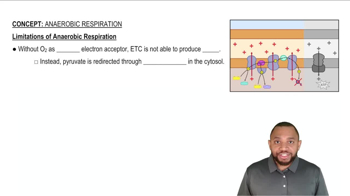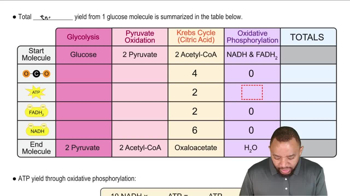Consider the complete oxidation of palmitoleic acid, CH3 ― (CH2)5 ― CH = CH ― (CH2)7 ― COOH, which is a C16 monounsaturated fatty acid found in animal and vegetable oils..
a. How many cycles of β oxidation are needed?
 Verified step by step guidance
Verified step by step guidance Verified video answer for a similar problem:
Verified video answer for a similar problem:



 3:8m
3:8mMaster Total Energy from Fatty Acids Concept 1 with a bite sized video explanation from Jules
Start learning